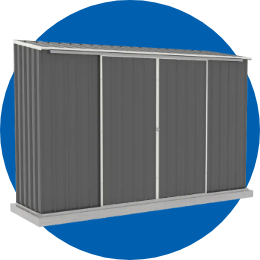- 9 March 2021
Improve light and ventilation with an extra window
If you have reasonable confidence in your skills, you can install an extra window in most homes. An extra window can improve your views, provide more flexibility for room layout, improve ventilation and add more light. You can increase the size of an existing window or add a window into a blank wall. In fact, you can radically change the exterior appearance of your home with more windows, larger windows, or windows of different proportion or style.
Your Materials Checklist
- 90 x 45mm or 65 x 35mm structural radiata pine or hardwood to match existing frame
- Header to suit opening span (check span tables)
- Architrave to match existing internal trim
- 65 x 19mm (or larger if required) treated pine or other durable timber for external trim
HARDWARE
- Window to suit opening
- 1 small pack 75mm x 8G screws
- 1 roll of aluminium flashing (width of wall frame + at least 25mm)
- 1 small pack 50 x 1.6mm bullet head nails
- 1 small pack 25mm galvanised clouts
- Window lock
- Blinds, curtain rods
OTHER MATERIALS
- Wood stain (colour of choice)
- Clear satin polyurethane
- Wood stop (putty): colour to match timber or stain
- Interior and exterior paint as required
- Interior and exterior gap filler and/or sealant
- Spackle
- Curtains, drapes
- Window tint film
Tools for the job
- Tape measure, pencil
- Cordless drill/driver and bits
- Keyhole saw, reciprocating saw, power mitre saw
- Claw hammer, wrecking bar, nail punch
- Stepladder and/or rented scaffold if required
- Props
- Caulking gun
- Utility knife Spirit level, carpenter’s square Dust mask, safety glasses, and hearing protection
- Putty knife, sanding block, sandpaper (120, 280 grades) Paint brush, rags, drop sheet.
Step 1: Structural issues
The external walls of your house carry the weight of the roof, ceiling and the second storey (if there is one). In the wall frame above all windows and doors there is a strong beam called a header (also called a lintel or head) and this is designed to carry the weight (dead load) of the structure above, plus resist live loads such as wind uplift on the roof and wind deflection of the wall and window. The bigger the span (the length of the header) the stronger the header must be to carry the load without deflecting (bending) downwards too much.
“Span Tables” are available at your local Mitre 10. These will tell you the size and strength of header required for your situation. You’ll need to know a few details: roof type (tiled or metal), truss or rafter spacing, roof span, upper or lower storey, and window opening size.
You will generally need to get approval from your local council before installing a window in an external wall. This is because a window is usually a structural change to the building, and it may affect your neighbour’s privacy.
This MitrePlan contains instruction for installing a window in the walls of timber-framed houses. If your house is brick, stone, brick veneer, or steel-framed there are differences in the installation requirements. Roof windows also require different installation methods. Discuss your specific needs with your local Mitre 10 staff. If your house has asbestos cladding do not cut it. Contact a licensed asbestos removal contractor for advice.
Step 2: Order your window
Try to match your new window to the existing windows in your home. Match them in material, colour and style if possible. This may be tricky for very old windows, but demolition yards and building recycling centres will often carry local windows in good condition.
Windows are available in both standard sizes and made-to-order. Naturally, standard sizes are the most economical – although sometimes “factory second” windows are available at bargain prices. These are often incorrectly ordered windows that are otherwise brand new.
You can either make the opening to suit the window, or order the window to suit the opening. Draw a neat sketch of the window, viewed from the outside, showing the opening dimensions, position of any fixed panes, position and direction of opening sashes, and the overall thickness of the wall including cladding and lining. Indicate clearly if you want a reveal fitted. This is a timber frame on the inside of the window to conceal the wall framing.
Step 3: Cut the wall and frame the opening
Use a stud finder to locate the position of the wall studs (the vertical timbers in the wall frame) and any power, water or gas lines that may be concealed in the wall. If there are any services in the way, contact a licensed contractor to have them repositioned.
Try to position the window so that you minimise the number of studs removed from the wall. It’s unlikely that a window will fit between the studs because the space between them is only 400 to 565mm.
Mark out the position of the new window accurately on the inside of the wall. Use the existing windows as a guide to the height. You’ll probably find that you can’t go too high because the roof eaves are usually lower than the ceiling. Allow 10 to 15mm clearance all around between the window and the opening. You’ll need this to pack the window so that it’s perfectly level and plumb.
Cut the plasterboard with a keyhole saw and remove it. Leave the exterior cladding in place until you are ready to install the window. Now it’s time to remove any studs that are in the way. If only one stud is to be removed you shouldn’t need any propping, but for wide windows you will need to take the weight of the structure on props until the header is installed. You can use timber and wedges for props, or hire adjustable props.
Cut through the studs at the bottom of the window opening with a reciprocating saw. Insert the saw 45mm below the opening in the plasterboard and carefully cut through. This will provide enough room for the 90 x 45mm “window sill trimmer”. The slot in the plasterboard will be concealed by the architraves or may be spackled. Check the span tables for windowsill trimmer sizes, as large openings may require either larger or multiple trimmers. Cut through the studs at the top in the same way, allowing enough space above the opening for your header.
Fix the header into place using screws into all of the studs. The screws will have to be skewed (angled), and you can do this right through the plasterboard and spackle them later. Fix additional studs tightly under the header at each end to support it if there’s enough room. Screw-fix the window trimmer into position at the bottom of the opening, then fit trimming studs at the sides to complete the frame if necessary. At every step use a spirit level to make sure each part is as level or plumb as possible.
When you have the window ready to be installed it’s time to cut the opening in the external cladding. Use a long drill bit (at least 150mm long) from the inside to accurately drill at each corner of the opening. Use a straight edge outside to mark the opening on the cladding, then cut it with a reciprocating saw.
Step 4: Install the window
Install “flashing” at the bottom of the opening. This is a tray of thick aluminium foil that will catch any water that penetrates the opening and then direct it back out of the building. It prevents rot in the wall frame. Bend the flashing so that it fits neatly in the opening and overhangs outside by about 15mm. Remove sliding sashes from the window or open double-hung sashes. Pre-start 75 x 2.5mm nails in the window reveal, then place 10mm packers (pieces of fibrous cement) on the flashing and sit the window into position from the outside.
Align the outside face of the window with the cladding and partly drive in the fixing nails to hold the window while you check it for fit. Some windows will fit neatly against the cladding but others will need to have timber trim fitted. Check that the internal reveal aligns with the wall lining, and cut or plane it to fit. Once you’re happy with the fit of the window, place packers above the nails in the reveal and drive the nails home. Do not nail the window through the top (into the header) or through the bottom (through the flashing).
Step 5: Finishing
Cut and fix architraves around the window reveal and fix with 50 x 1.6mm nails. For more information see our MitrePlan “Change your architraves and skirtings”. Seal between the cladding and window with a good quality exterior sealant – except at the bottom, where the flashing must be able to drain. If the sealant will be seen and is to be painted, use a paintable sealant and follow instructions carefully, as some must be painted within 48 hours. Fill any holes in the plasterboard with spackle and any holes in the cladding with exterior filler, and then paint as required.






















